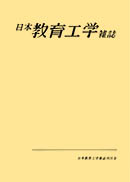Volume 18, Issue 2
Displaying 1-13 of 13 articles from this issue
- |<
- <
- 1
- >
- >|
-
Article type: Cover
1995 Volume 18 Issue 2 Pages Cover1-
Published: January 20, 1995
Released on J-STAGE: October 20, 2017
Download PDF (28K) -
Article type: Cover
1995 Volume 18 Issue 2 Pages Cover2-
Published: January 20, 1995
Released on J-STAGE: October 20, 2017
Download PDF (28K) -
Article type: Appendix
1995 Volume 18 Issue 2 Pages App1-
Published: January 20, 1995
Released on J-STAGE: October 20, 2017
Download PDF (80K) -
Article type: Appendix
1995 Volume 18 Issue 2 Pages App2-
Published: January 20, 1995
Released on J-STAGE: October 20, 2017
Download PDF (80K) -
Article type: Article
1995 Volume 18 Issue 2 Pages 47-60
Published: January 20, 1995
Released on J-STAGE: October 20, 2017
Download PDF (1226K) -
Article type: Article
1995 Volume 18 Issue 2 Pages 71-78
Published: January 20, 1995
Released on J-STAGE: October 20, 2017
Download PDF (824K) -
Article type: Article
1995 Volume 18 Issue 2 Pages 87-96
Published: January 20, 1995
Released on J-STAGE: October 20, 2017
Download PDF (834K) -
Article type: Article
1995 Volume 18 Issue 2 Pages 97-102
Published: January 20, 1995
Released on J-STAGE: October 20, 2017
Download PDF (634K) -
Article type: Appendix
1995 Volume 18 Issue 2 Pages App3-
Published: January 20, 1995
Released on J-STAGE: October 20, 2017
Download PDF (16K) -
Article type: Appendix
1995 Volume 18 Issue 2 Pages App4-
Published: January 20, 1995
Released on J-STAGE: October 20, 2017
Download PDF (117K) -
Article type: Appendix
1995 Volume 18 Issue 2 Pages App5-
Published: January 20, 1995
Released on J-STAGE: October 20, 2017
Download PDF (117K) -
Article type: Cover
1995 Volume 18 Issue 2 Pages Cover3-
Published: January 20, 1995
Released on J-STAGE: October 20, 2017
Download PDF (31K) -
Article type: Cover
1995 Volume 18 Issue 2 Pages Cover4-
Published: January 20, 1995
Released on J-STAGE: October 20, 2017
Download PDF (31K)
- |<
- <
- 1
- >
- >|
